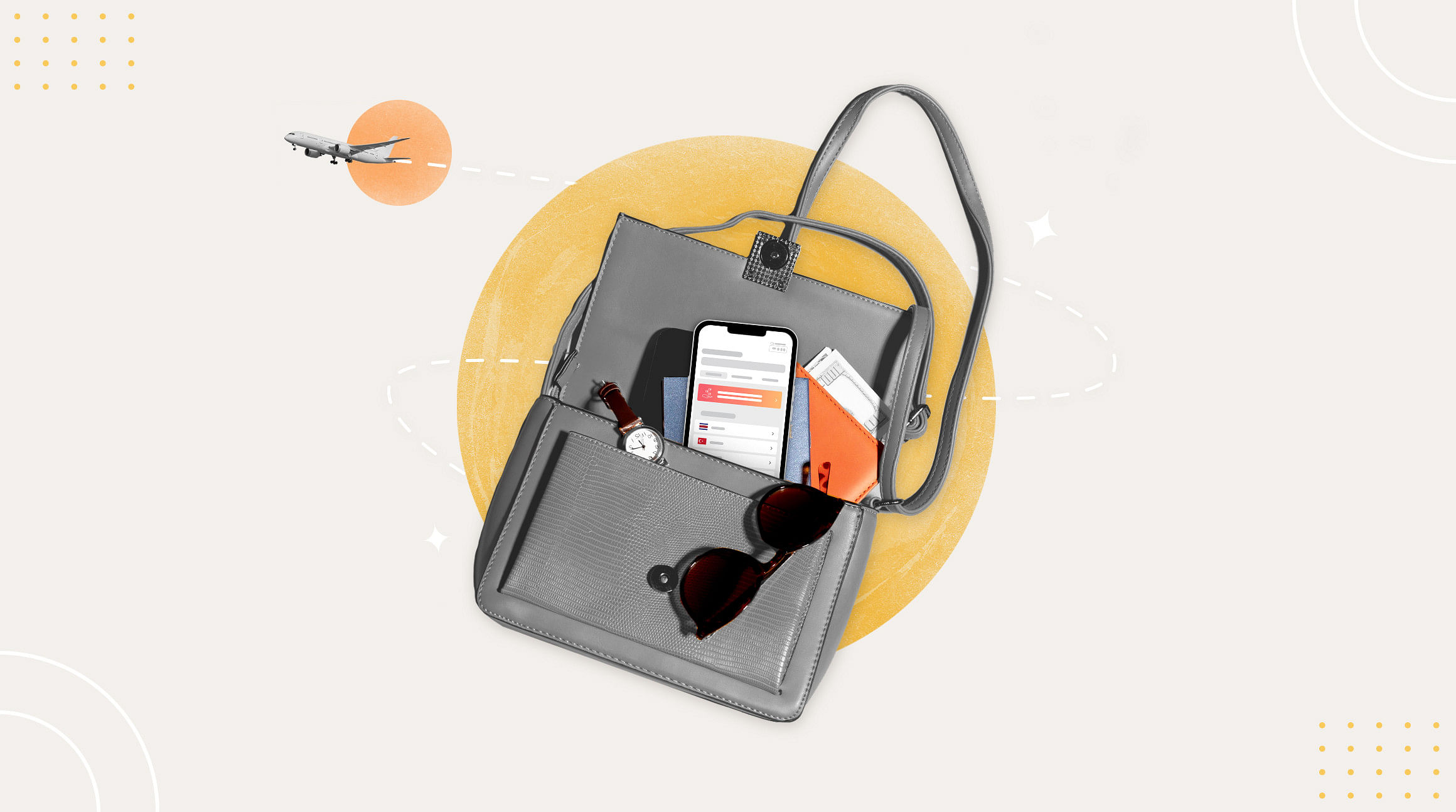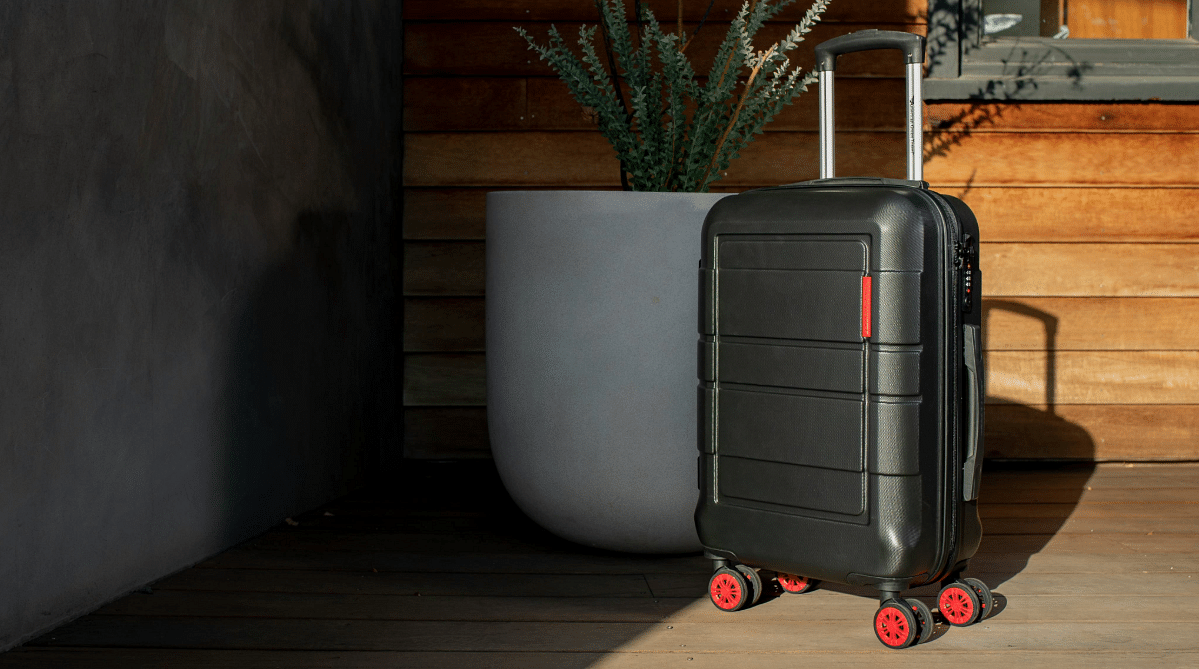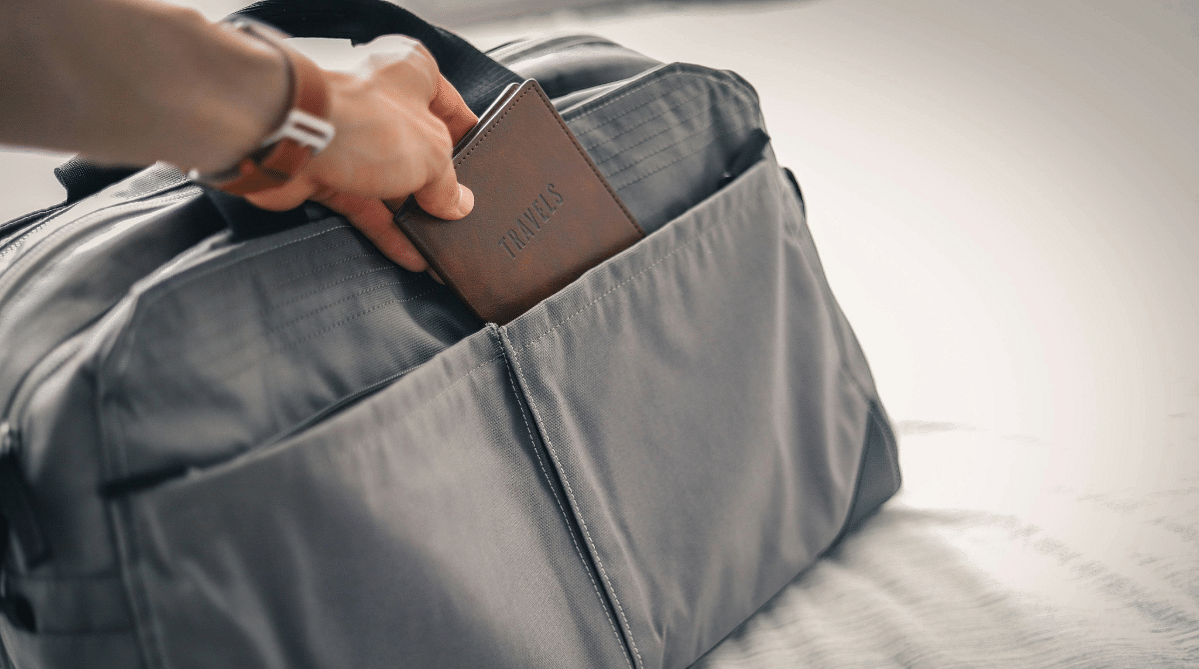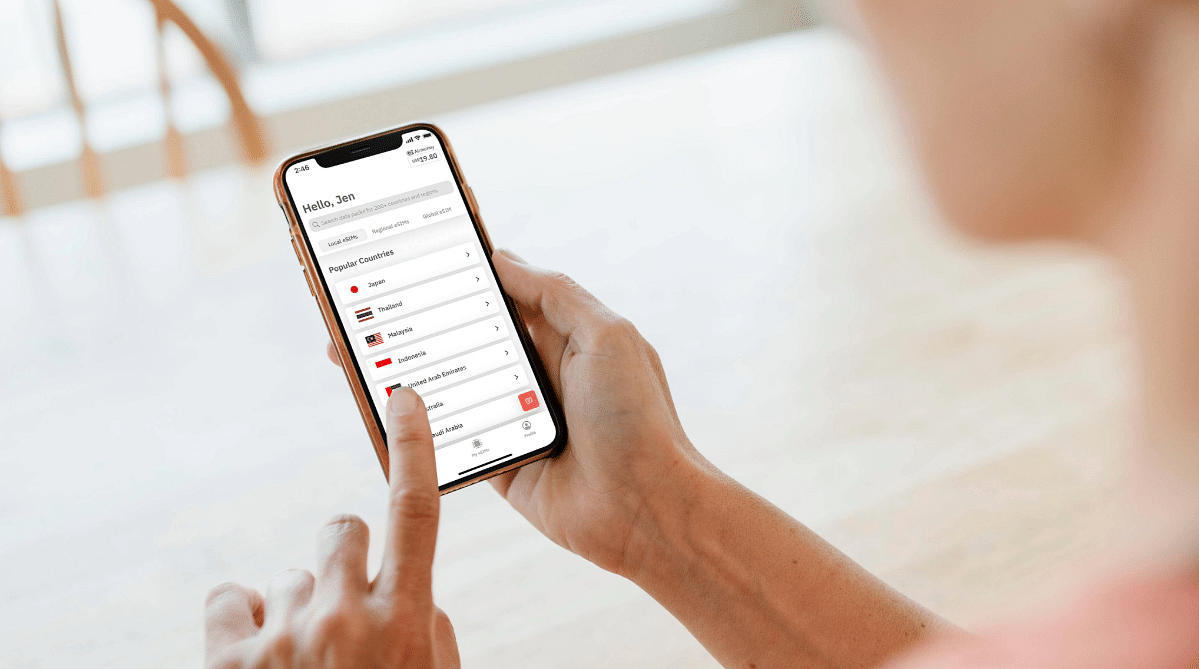No products in the cart.
Uncategorized
How to Pack Your Carry-on Like a Pro

Some people prefer to check their bags, and others are firmly team carry-on. Either way, the traveler’s rule of thumb says this: If you can’t go without it for half a day or more, pack it in your carry-on.
This guide breaks down the rules and restrictions for carry-on luggage and how to pack for travel so you’re always prepared — delayed flight, missed connection, or every traveler’s nightmare: lost luggage.
In this article:
- What is carry-on luggage?
- What items are restricted to pack in carry-on?
- 12 things you should always pack in your carry-on
- Stay connected from the moment you land
- Carry-on FAQs
 Unsplash
Unsplash
What Is Carry-On Luggage?
Carry-on luggage is any baggage that’s taken inside an aircraft by the passenger. It stays with you for your entire travel experience, from check-in, through security, during your flight, and at your destination. Since carry-on luggage can be reached throughout your trip, you always have what you need to relax and enjoy.
Carry-on luggage is different from checked luggage, which gets dropped off at the check-in counter at the airport. It’s then weighed, labeled, and put in your plane’s cargo hold. Accidentally checked your lip balm? You’re out of luck. Passengers don’t have access to their checked baggage during a flight.
After you land, you’ll find checked baggage circling the carousel along with all the other luggage.
How Much Carry-On Luggage Can You Bring?
Most airlines allow two pieces of carry-on luggage: One that fits in an overhead bin and a smaller “personal item” (like a purse, laptop bag, or diaper bag) that fits under the seat in front of you. Carry-on luggage typically has to be 22 x 14 x 9 inches or smaller, including the handle and wheels.
If you’re traveling in an upgraded class like business or first, you may be allowed additional carry-on luggage. On the flip side, some budget airlines limit carry-on luggage to personal items or charge you for space in the overhead bins. It’s always best to check with your airline’s specific policies before you pack for travel.
What Items Are Restricted in a Carry-On?
If carry-on luggage has a disadvantage, it’s that certain items aren’t allowed to make the cut. And while you’re probably not bringing a fire extinguisher on your getaway, there are some limitations when you’re packing a carry-on.
The rules vary slightly from country to country, but generally, you’re prohibited from packing the following items in your carry-on luggage:
- Aerosol products
- Lithium or lithium-ion batteries
- Firearms
- Ammunition
- Flammables
- Explosives
- Self-defense items
- Gel candles (wax candles are okay)
- Large quantities of alcohol, generally more than 3.4 ounces
- Certain chemicals, including chlorine, bleach, fertilizers, and tear gas
- Fire extinguishers
- Outdoor and wildlife safety products like bear bangers and bear spray
Carry-On Approved Items
All non-prohibited liquids and gels are allowed on planes, but only in small amounts. Items like drinks, facewash, makeup, toothpaste, or hand sanitizer must be in a 3.4-ounce or smaller container and fit in a single, clear, zippered bag.
There are a few exceptions to this rule:
- Medications: All prescription and over-the-counter medications are allowed in your carry-on bag, even if they’re more than 3.4 ounces, and it’s not necessary to put them in a zippered bag. However, you must let security know about your medications and your bag may require additional screening.
- Baby items: Baby formula, breast milk, juice, liquid-filled teethers, and baby food are allowed on board if you’re traveling with a baby or small child. These items don’t need to meet the 3.4-ounce or zippered bag rule, but you must declare them at security and go through extra screening.
- E-cigarettes and vaping devices: Provided you don’t use them on the plane, e-liquids, e-cigarettes, and vaping devices can go in your carry-on as well. They’re actually prohibited in checked luggage, so be sure to leave some room.
- Other items: You can pack small tools, like nail clippers and scissors, as long as they’re less than seven inches. Lighters, non-lithium batteries, small portable electronics, essential medical equipment, and disposable and electric razors are also fair game.
 Unsplash
Unsplash
12 Things You Should Always Pack in Your Carry-On
Even if you’re checking luggage, certain items should always go in your carry-on. Make sure there’s space for things you need to travel comfortably and for items you can’t go more than half a day without. Here’s what we recommend:
Passport and ID
Your identifying documents should be safe and close at hand. You’re going to need them to get on your flight and through customs, and if you’re checking into a hotel or renting a car. Make sure they’re not only in your carry-on, but handy—the last thing you want to do is dig through the rest of the items on this list while you’re trying to find them.
Pro tip: Consider taking a photo of your ID and sharing it with someone at home. It’s always smart to have a backup in case something happens.
A Change of Clothes
Travel is amazing, but it can also be stressful, sweaty, and unpredictable. There are plenty of reasons to have a change of clothes close at hand:
- Lost or delayed luggage: If your checked bag is lost or delayed and you don’t have spare clothes in your carry-on, you may wind up in the same outfit for longer than you’d like.
- Long-haul flights: After hours in airports and sitting on planes, there’s nothing nicer than changing your clothes before you land.
- Lengthy layovers: You don’t have access to checked luggage until you reach your final destination. Clean clothes can make long periods in the airport or a nearby hotel more comfortable.
- Potential for spills: Cramped planes and crowded airports are prone to accidents. It’s smart to have spare clothes in case drinks get knocked off trays or you bump into someone (and their coffee) in a busy terminal.
Choose light, easy-to-fold clothing so there’s still space for your other important items.
Toiletries
Pack what you’d need if you were stranded in the middle of nowhere: Toothpaste, a toothbrush, face wash or makeup wipes, contact lens solution if needed, moisturizer, and lip balm.
With basic toiletries close at hand, you can freshen up at any point on your trip or remove makeup and brush your teeth before going to sleep. And if checked bags are lost or delayed, you still have access to your essentials. Planes can also be dehydrating, so you’ll appreciate having moisturizer and lip balm throughout your flight.
A quick note of caution: The pressure on plans can cause toiletries to burst or leak. It’s good practice to pack everything in a sealed plastic container to avoid ruining other items in your bag.
Medications
If you take medication daily, always pack it in your carry-on. While most checked bags make it safely to their destination, it’s best not to leave your medication to chance. You should also bring over-the-counter pain relievers, vitamins, or allergy medications in case you feel unwell.
Snacks
Always toss a few hearty snacks in your carry-on because you never know when you’ll be without food. Airport food options may not be open when you need them, you could sleep through the food service on your flight, or your time zone might not line up with your body’s schedule. Snacks are also helpful if you’re stuck on your plane with no option to get off (hey, it happens).
Reusable Water Bottle
We always recommend traveling with a reusable water bottle — just make sure it’s empty before you go through security. Flying can dehydrate you, and the tiny cups of water they serve on flights don’t really cut it. Plus, you’ll save yourself some money buying expensive water at the airport store.
If you typically carry water with you when you’re out, you’ll also appreciate having your favorite bottle on your trip.
Hand Sanitizer and Wipes
How clean are planes, really? It’s a bit of a mystery. Sanitizer and wipes are handy for cleaning seats, trays, and other items. They can also be used in a pinch if water’s not available and you need to wash your hands. Just make sure your hand sanitizer meets the 3.4-ounce requirement for carry-on liquids.
Wired Headphones
Though popular, Bluetooth or wireless headphones aren’t always compatible with in-flight entertainment systems, and they need to be charged. It’s best to bring a wired pair for backup on and off the plane.
Portable Charger
It can be challenging to find an outlet when you’re traveling, especially when you’re spending your days exploring. A portable charger ensures you’re powered up throughout your trip and you’re free to send updates, get some work done, or find directions. This way you’re also prepared for any emergencies that arise.
If your portable charger is a battery pack, make sure it’s compliant with TSA rules.
Adapter
Different countries use different plug shapes and different voltages. If you’re traveling internationally, you’ll need an adapter to power your electronics and that portable charger you’re packing. You can purchase region-specific adapters or get a universal adapter that adjusts no matter where you go.
Cell Phone With an eSIM
Few of us leave the house without our phones, let alone the country. So we’re assuming it’s on you at all times. But do you have a plan for staying connected while you’re traveling? Phone service and free Wi-Fi aren’t available everywhere, and roaming charges can really add up.
We recommend purchasing and installing an eSIM from Airalo before you fly. An eSIM helps you avoid roaming fees and keeps you connected no matter where you are in the world.

Stay Connected From the Moment You Land
Don’t waste precious vacation time hunting down local SIM cards. Get connected the second you arrive at your destination with an eSIM from Airalo. With packages for 200+ countries and regions, Airalo keeps your travel costs down and ensures you’re online at all times — not desperately searching for Wi-Fi.
What To Pack in a Carry-On FAQs
What is the difference between carry-on and checked luggage?
Carry-on luggage stays with you for your whole journey, from check in, through security, on the plane, and after you land. While you’re flying, carry-on luggage goes in the overhead bin or under the seat in front of you. At no point does carry-on luggage go in the plane’s cargo hold.
Checked luggage gets dropped off at the check-in desk before you get on your flight. It’s weighed, measured, screened, and put in the plane’s cargo hold. You pick your checked luggage up on a baggage carousel after you land. Checked luggage can’t be accessed during your flight.
What am I not allowed to pack in a carry-on?
You’re not allowed to pack potentially dangerous items in your carry-on, including anything flammable or explosive, weapons and ammunition, sporting goods, certain types of gels, certain chemicals, or wildlife safety products. Large amounts of alcohol or liquid are also prohibited, generally more than 3.4 ounces. If you must pack sharp items like nail clippers or small scissors, they need to be less than seven inches.
What should I pack in my carry-on?
You should always pack essential travel items and items you can’t go without for more than half a day in your carry-on. This includes your passport or ID, medications, basic toiletries, your phone and electronics, snacks, and more. If your checked luggage is lost, delayed, or damaged, you still have things you need to stay comfortable and functional.
What are the size restrictions for carry-on luggage?
Most airlines allow two pieces of carry-on luggage: One that goes in an overhead compartment and a smaller purse, laptop bag, or backpack that gets stowed under the seat in front of you. Carry-on luggage can’t be larger than 22 x 14 x 9 inches, including the handle and wheels, because it must fit your airline’s overhead compartment.

